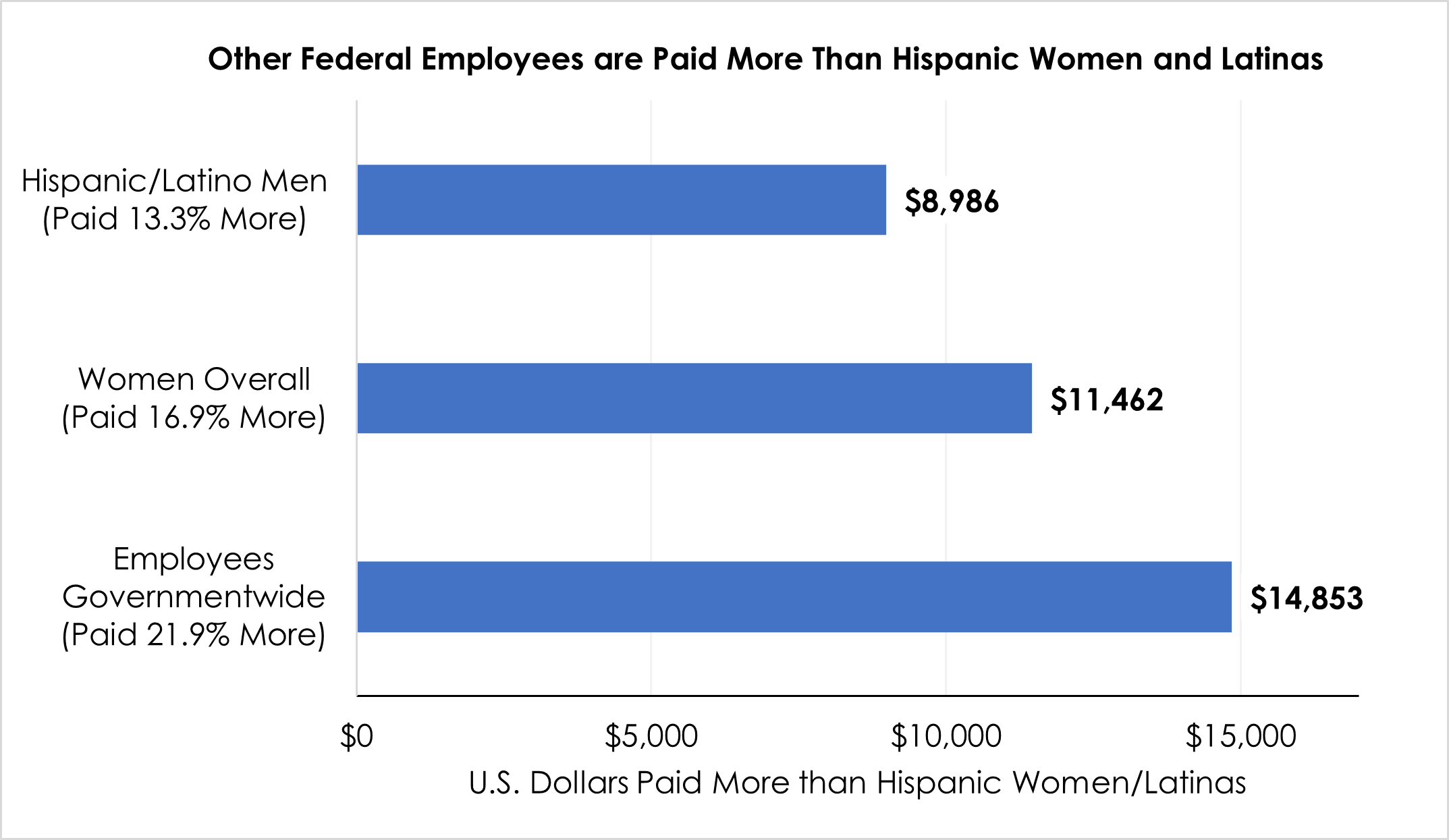How diverse are the executives, managers and supervisors working in government?
The Equal Employment Opportunity Commission’s latest reports reveal three demographic groups that are behind in both pay and representation in leadership.
Despite a massive push to advance diversity, equity, inclusion and accessibility in the federal workforce, new findings from the Equal Employment Opportunity Commission show that the road ahead is still a long and tough one.
Specifically for women working in the federal government, the topline numbers look much different than they do when you slice the data by specific demographic groups.
“The barriers faced by different groups of women are sometimes hidden in larger data,” Dexter Brooks, associate director of EEOC’s Office of Federal Operations, said in a statement.
Compared with the nationwide workforce, certain minority groups of women are relatively better represented in numbers in the federal sector. For example, American Indian and Alaska Native women comprise 0.8% of the federal workforce, more than double their representation in the nationwide workforce. African American women make up 11.7% of the federal workforce, and just 6.6% of the nationwide workforce.
But notably, three of EEOC’s latest reports reveal that these demographic groups, as well as Hispanic and Latina women working for the government, are behind in two key areas: pay and leadership positions.
“This is where we start seeing that they are underrepresented as executives, managers and supervisors compared to representation in the federal sector overall,” Mxolisi “Mike” Siwatu — whose research focused on American Indian, Alaska Native and African American women in government — said in an interview with Federal News Network.
African American women, for instance, represent 7.3% of all executives in government, while women overall comprise 38.5% of federal executives.
African American women in the federal workforce:

Women overall in the federal workforce:

“Line employees, supervisors, managers and executives have different levels of influence and responsibility in the workplace,” the EEOC report said. “Participation in supervisory, managerial and executive positions is one way to measure workforce advancement.”
The findings, however, were slightly different for EEOC’s report on Hispanic and Latina women in government.
“Hispanic women and Latinas are underrepresented in the federal workforce,” Karen Brummond, author of EEOC’s report on Hispanic and Latina women in government, said in an interview. “While they made up 6.2% of the civilian labor force nationwide, they only accounted for 4.5% of federal employees.”
Aside from general underrepresentation of Hispanic and Latina women, some levels of leadership positions are seeing more positive trends than others for that demographic group.
“Hispanic and Latina women held first line supervisory positions in the federal agencies at a higher rate than their participation in the federal workforce,” Brummond said. “But like American Indian and Alaska Native women and African American women, they were underrepresented in the higher leadership positions — they were underrepresented as managers and executives.”
Pay falling short of overall federal workforce
The workforce challenges for these groups don’t end at leadership representation either. African American women generally earn less in overall salary. Specifically, they make about $26,200 less than all federal employees, and $22,800 less than all women.
Similarly, American Indian and Alaska Native (AIAN) women working in government earn less, on average, than American Indian and Alaska Native men, women overall and employees overall.
Wage amounts paid above American Indian and Alaska Native women in government:

Hispanic and Latina women working for the federal government also experience a pay disparity compared with other, larger sectors of the government’s workforce.
“We do see a substantial gap,” Brummond said.

In general, the gender-based pay gap has improved pretty dramatically over time. The current 5.6% average pay gap significantly smaller than it was 30 years ago — 24.5%.
In other words, women currently make 94.4 cents for every dollar men make in the federal workforce.
The gender pay gap in the federal sector is also smaller than the current 16% gap in the private sector.
Of course, despite improvements, racial and gender-based pay gaps are still prevalent in the federal workforce. Figuring out where exactly the remaining pay disparities come from is complicated. The General Schedule, the government’s pay system for about 1.5 million federal employees, is relatively stringent and, to some extent, can hedge against gender-based pay gaps more so than the private sector.
But the rigidity of the General Schedule pay system is also a double-edged sword. According to federal pay experts, in addition to helping move the government toward smaller racial and gender-based pay gaps than the private sector, the pay system can cause persistent pay inequity in the federal workforce as well.
Previous research from the Government Accountability Office in 2017 found that differences in occupation tend to explain the current racial and gender-based gaps, but EEOC experts said more research is necessary.
“Within the federal government, we do still find persistent disparities across the groups with respect to pay,” Siwatu said. “Currently, we don’t have an explanation for why that’s the case.”
In fact, GAO attributed much of the government’s gender pay gap to “unexplained factors,” such as promotions and career choices, which it can’t entirely measure.
Discrimination can play a role, too, GAO has said. Whether they’re conscious of it or not, agencies may tend to choose women for certain occupations and men for others.
In May, OPM took a step to try to close that pay gap a little further. Looking to eventually fully close the gender-based pay gap in the federal workforce, OPM proposed a rule that would bar agencies from using a federal job candidate’s previous salary history when setting pay as part of an employment offer. The proposed rule is still making its way through the federal regulatory process and has not yet been finalized.
There were other factors measured in the EEOC reports, but Siwatu said the top two most telling factors were pay gaps and drop-offs in leadership positions. But getting to the root cause will take further research.
“We see that the pay gaps are there now — we acknowledge that as an emerging issue,” Siwatu said. “Then it becomes a question of why is that there, and what to do about it.”
Nearly Useless Factoid
In 1916, Jeannette Rankin became the first woman in US history elected to the House of Representatives.
Source: National Park Service
Copyright © 2025 Federal News Network. All rights reserved. This website is not intended for users located within the European Economic Area.
Drew Friedman is a workforce, pay and benefits reporter for Federal News Network.
Follow @dfriedmanWFED






